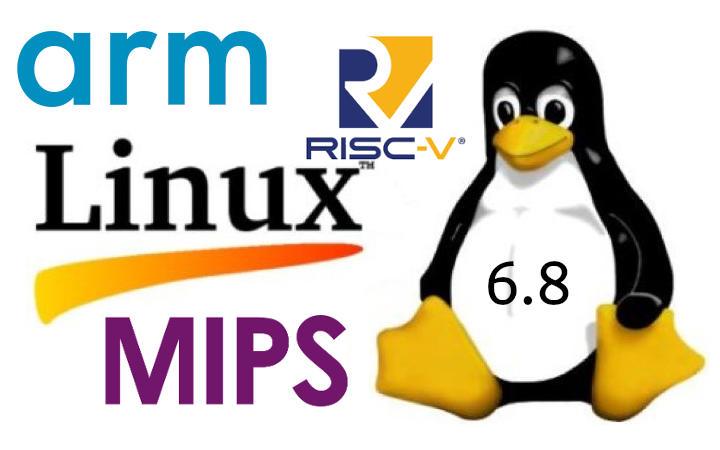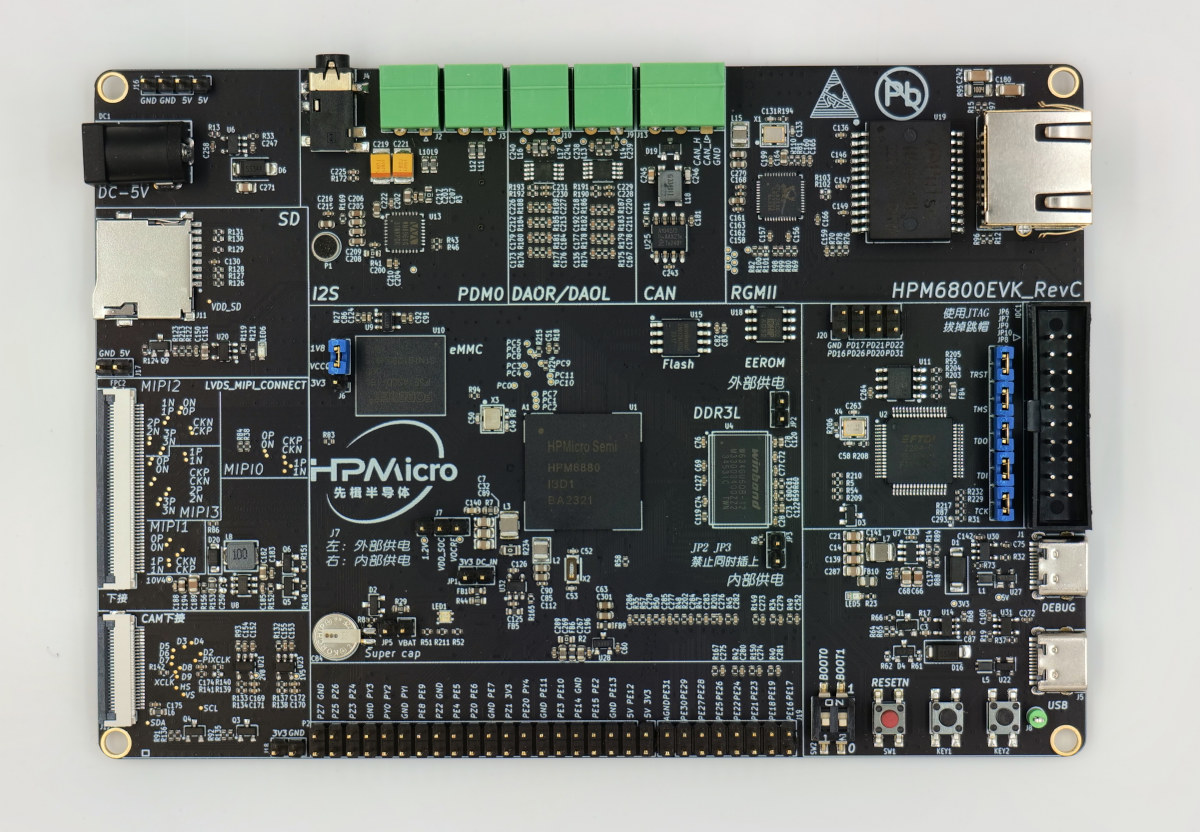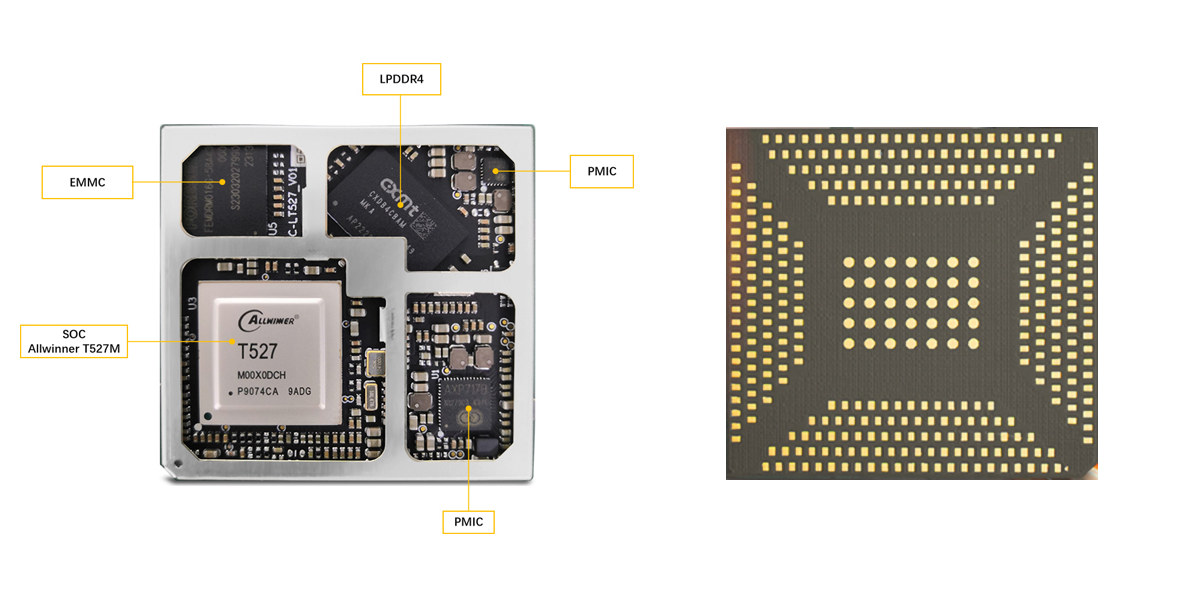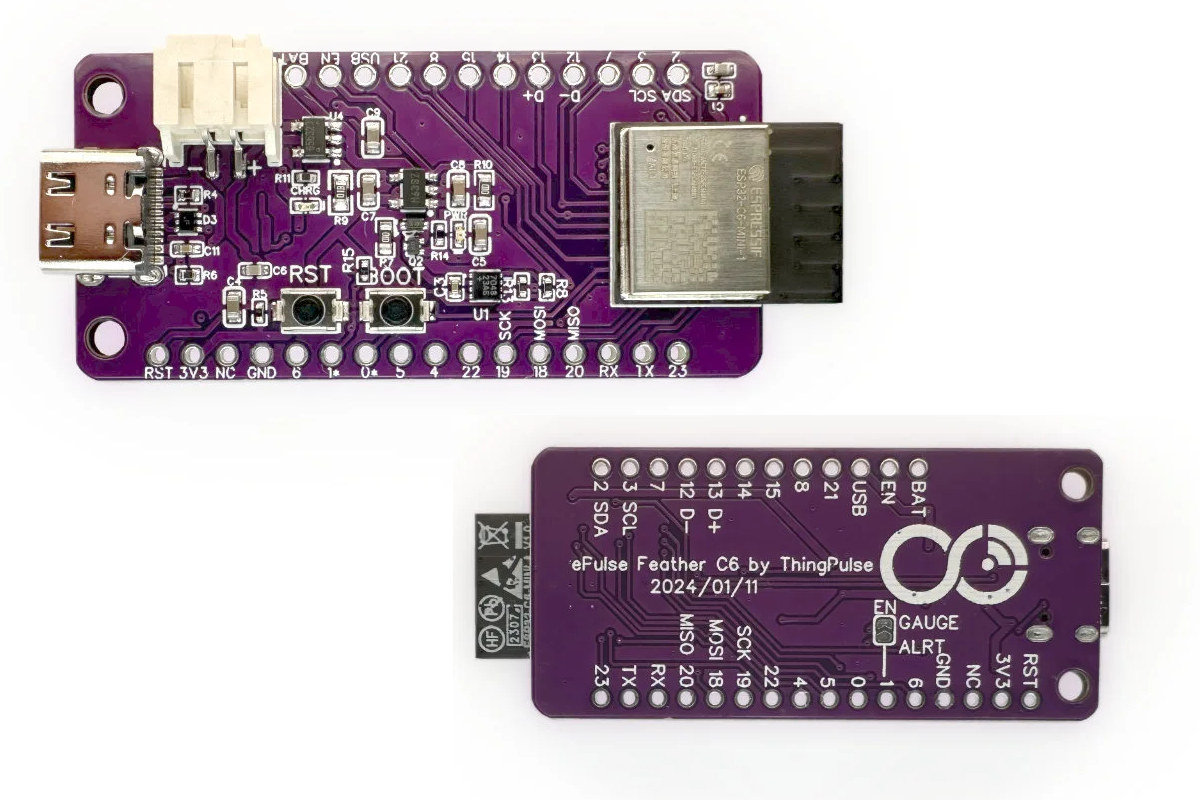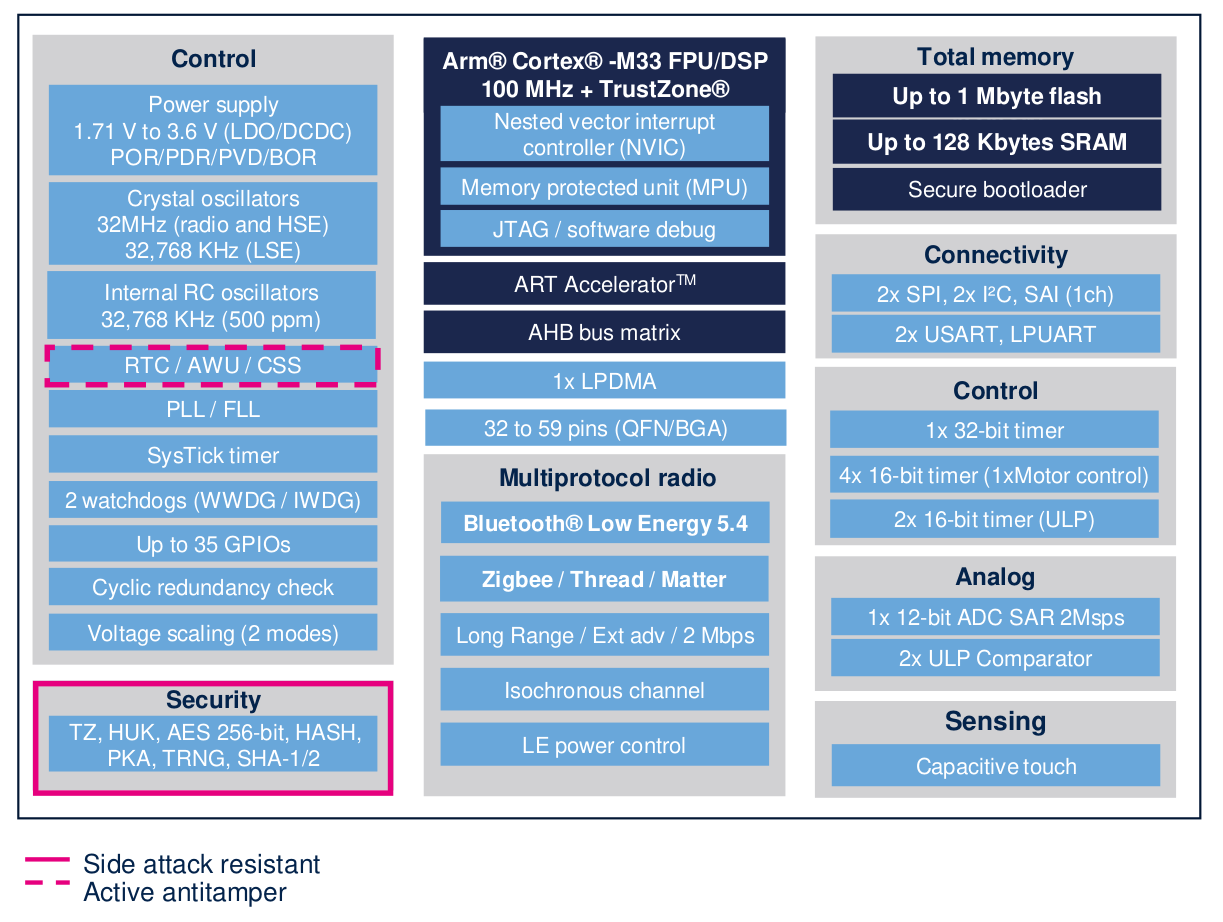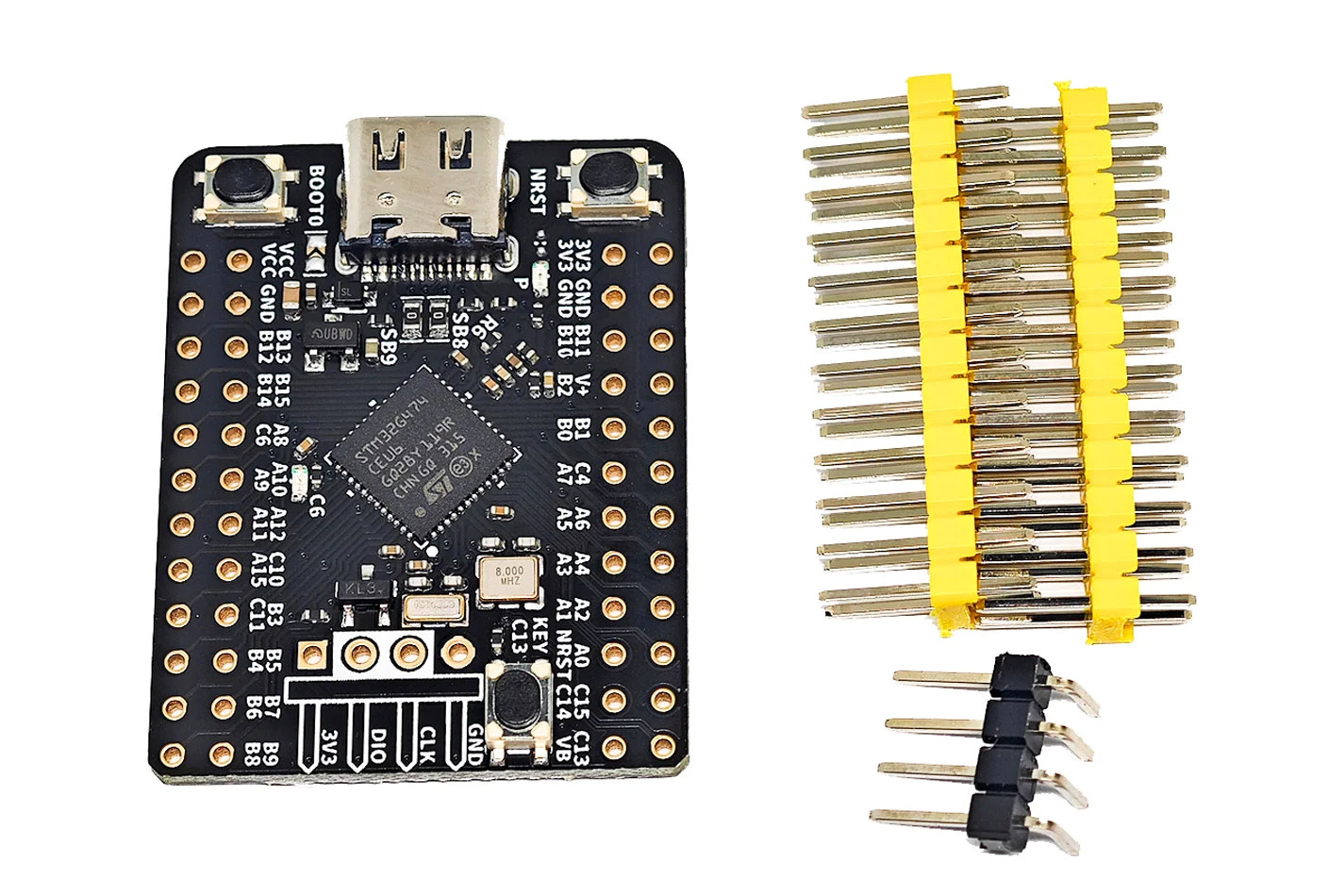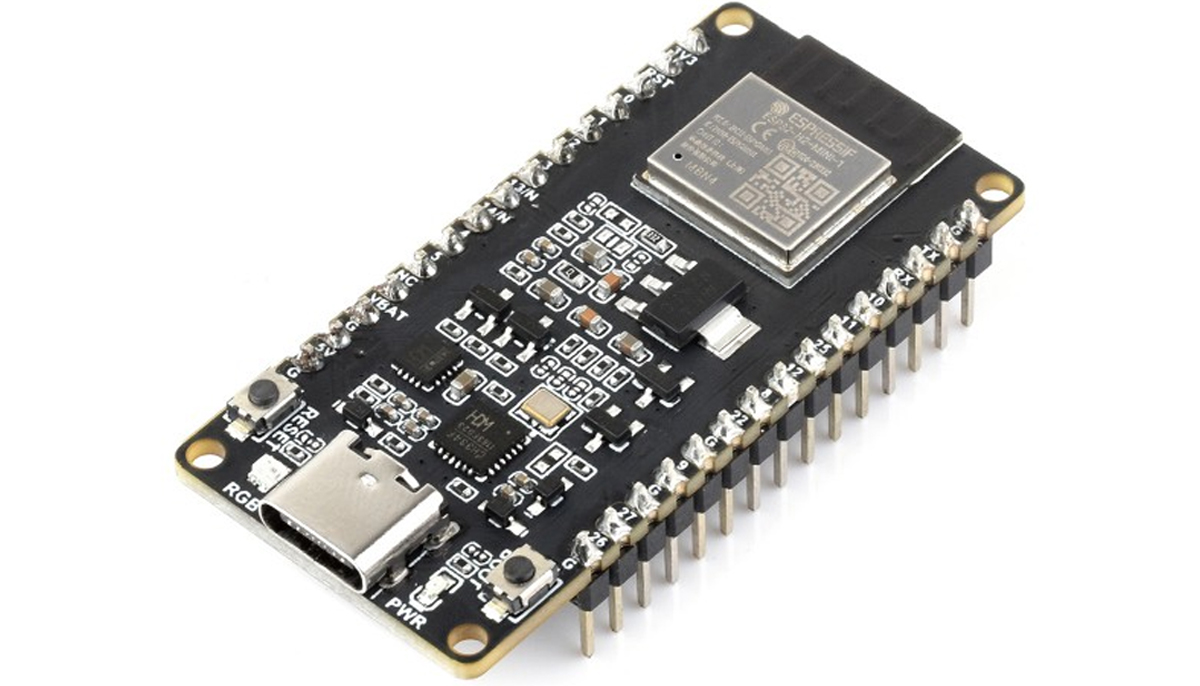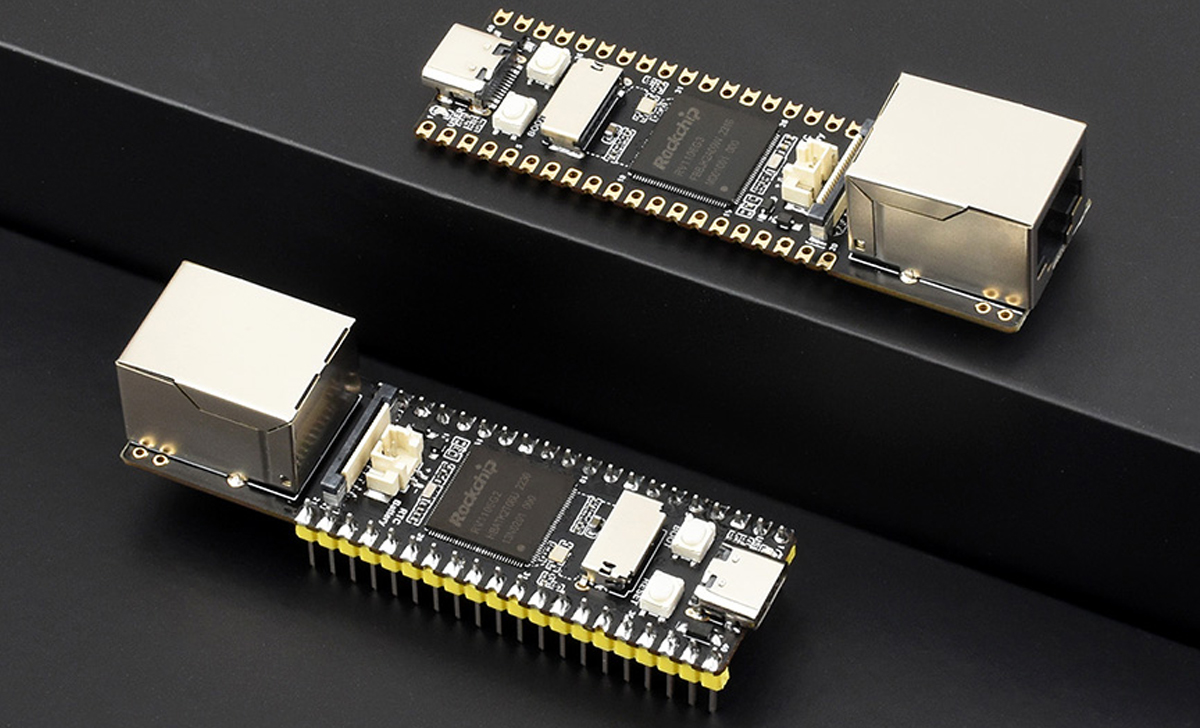Linus Torvalds has just announced the release of Linux 6.8 on the Linux kernel mailing list: So it took a bit longer for the commit counts to come down this release than I tend to prefer, but a lot of that seemed to be about various selftest updates (networking in particular) rather than any actual real sign of problems. And the last two weeks have been pretty quiet, so I feel there’s no real reason to delay 6.8. We always have some straggling work, and we’ll end up having some of it pushed to stable rather than hold up the new code. Nothing worrisome enough to keep the regular release schedule from happening. As usual, the shortlog below is just for the last week since rc7, the overall changes in 6.8 are obviously much much bigger. This is not the historically big release that 6.7 was – we seem to […]
HPMicro HPM6800 600 MHz RISC-V MCU comes with a Vivante 2.5D GPU with OpenVG support
HPMicro HPM6800 is a family of high-end RISC-V microcontrollers clocked up to 600 MHz integrating a VeriSilicon Vivante 2.5D GPU with support for the OpenVG 1.1 vector graphics API, and peripherals making it suitable for digital dashboard displays and human-machine interfaces (HMI). The family is comprised of three parts: the HPM6830 without video support, the HPM6850 with 2D graphics and video input/outputs, and the HPM6880 adding support for the 2.5D OpenVG GPU from VeriSilicon. All variants come with 1064KB SRAM, support for external DDR2/DDR3/DDR3 memory, NOR, PSRAM and eMMC flash, audio interfaces, and a range of peripherals with eight CAN FD interfaces, gigabit Ethernet, USB high-speed, and many more. HPMicro HPM6800 specifications: CPU – Single core 32-bit RISC-V (RV32-IMAFDCP) processor @ 600MHz with 32KB I/D Cache (3390 CoreMark) Memory 1064 KB SRAM with 256KB ILM + 256KB DLM in the RISC-V core, 512KB AXI SRAM, 32KB AHB SRAM, and 8KB […]
Allwinner T527 System-on-Module features octa-core Cortex-A55 CPU, 2 TOPS AI accelerator
MYiR MYC-LT527 is a compact System-on-Module (SoM) based on Allwinner T527 octa-core Arm Cortex-A55 SoC with a 2 TOPS AI accelerator, up to 4GB RAM, 32GB flash, and a land grid array (LGA) comprised of 381 pads with a range of interfaces for displays and cameras, networking, USB, and PCIe, and more. The company also introduced the MYD-LT527 development board to showcase the capabilities of the Allwinner T527 CPU module suitable for a range of applications such as industrial robots, energy and power management, medical equipment, display and controller machines, edge AI boxes and boards, automotive dashboards, and embedded devices that require media and AI functionalities. MYC-LT527 Allwinner T527 System-on-Module MYC-LT527 specifications: SoC – Allwinner T527 CPU Octa-core Arm Cortex-A55 processor with four cores @ 1.80 GHz and four cores @ 1.42GHz E906 RISC-V core up to 200 MHz DSP – 600MHz HIFI4 Audio DSP GPU – Arm Mali-G57 MC1 […]
ePulse Feather C6 – An ESP32-C6 development board with Adafruit Feather form factor, LiPo battery support
ThingPulse ePulse Feather C6 is a new ESP32-C6 development board with WiFi 6, BLE5, Zigbee, Thread, and Matter connectivity that follows the Adafruit Feather form factor and supports LiPo battery charging through a charger IC and a fuel gauge. Just like its predecessor called ePulse Feather, the ePulse Feather C6 is optimized for low power consumption but replaces an ESP32-WROVER-E-N8R8 module but an ESP32-C6-MINI-1 with a 802.15.4 radio for Zigbee, Thread, and Matter, as well as 2.4 GHz WiFi 6 and Bluetooth 5.3 LE connectivity. ePulse Feather C6 specifications: Wireless module – ESP32-C6-MINI-1 SoC – ESP32-C6H4 32-bit RISC-V microprocessor up to 160 MHz with 320KB ROM, 512KB HP SRAM, 16KB LP SRAM, 4MB flash Wireless – 2.4 GHz WiFi 6 with Target Wake Time (TWT) support, Bluetooth 5.3 LE and Mesh, 802.15.4 radio with Zigbee, Thread, and Matter PCB Antenna USB – 1x USB Type-C port for power/charging and programming […]
STM32WBA microcontrollers with Bluetooth LE 5.4, Zigbee, Thread, and Matter to comply with US and EU Cybersecurity regulations
STMicro’s new STM32WBA series, starting with the STM32WBA52, STM32WBA54, and STM32WBA55 devices, is a family of Arm Cortex-M33 wireless microcontrollers with Bluetooth LE 5.4, Zigbee, Thread, and Matter connectivity that achieved the SESIP (Security Evaluation Standard for IoT Platforms) Level 3 security certification and should make them compliant with US Cyber Trust Mark and EU Radio Equipment Directive (RED) regulations due to become mandatory in 2025. The 100MHz STM32WBA54 and STM32WBA55 microcontrollers come with up to 1MB of flash memory, support Arm TrustZone architecture isolating secure processes and storage, and incorporate background autonomous mode, flexible power-saving states, and analog and digital peripherals found in STMicro STM32U5 ultra-low-power MCUs. STM32WBA54 and STM32WBA55 specifications: MCU core – Arm Cortex-M33 at 100MHz with FPU and DSP Memory – Up to 128KB SRAM Storage – Up to 1 MB flash Wireless Bluetooth Low Energy 5.4 Long Range (LR) capable Up to 2 Mbps Bluetooth […]
WeAct STM32G4 is a tiny board based on STMicro STM32G4 mixed-signal microcontroller
WeAct STM32G4 is a tiny development board based on a 170 MHz STMicro STM32G4 Arm Cortex-M4F mixed-signal microcontroller with DSP instructions and suitable for applications such as motor control, building automation, lighting, digital power meters, and more. Two versions of the board are offered one with an STM32G474CEU6 “Hi-resolution line” microcontroller equipped with 128KB RAM and 512KB flash, and the other with the lower-end STM32G431CBU6 “Access Line” MCU with just 32KB RAM and 128KB flash. The board also comes with a USB-C port for power and programming, three buttons, and two 24-pin headers. WeAct STM32G4 specifications: Microcontroller (one or the other) STMicro STM32G431CBU6 – Arm Cortex-M4F MCU @ 170 MHz with DSP instructions, 32KB RAM, 128KB flash, and math accelerator STMicro STM32G474CEU6 – Arm Cortex-M4F MCU @ 170 MHz with DSP instructions, 128KB RAM, 512KB flash, and math accelerator; high-resolution timer and complex waveform builder plus event handler (HRTIM) for […]
Waveshare ESP32-H2-DEV-KIT-N4-M – A Low-cost ESP32-H2 development board going for $6.65
The Waveshare ESP32-H2-DEV-KIT-N4-M is a development board based on the ESP32-H2, available for only $6.65 on Aliexpress, but you’ll also find it on Amazon and Waveshare’s official store. This is a significant price drop compared to last year’s official Espressif ESP32-H2-DevKitM-1 board, which was priced at $10 without including shipping costs and with a similar design. In 2021, Espressif Systems introduced the ESP32-H2 to the world. However, it wasn’t until 2023 that they released their first development board. Since then, there haven’t been many products built around this new module. Some exceptions include the Olimex ESP32-H2-DevKit-LiPo, LILYGO T-Panel, and the ESP Thread Border Router/Zigbee Gateway board, all of which feature the ESP32-H2 chip. Waveshare ESP32-H2-DEV-KIT-N4-M specifications: Wireless module – ESP32-H2-MINI-1 MCU – Espressif Systems ESP32-H2 32-bit RISC-V microcontroller at up to 96 MHz with 320 KB SRAM, 128 KB ROM, 4 KB LP memory, Bluetooth 5.2 LE/Mesh, and 802.15.4 (Zigbee/Thread/Matter) radios. […]
LuckFox Pico Pro and Pico Max – Rockchip RV1106 powered boards with 10/100M Ethernet and camera support
The LuckFox LuckFox Pico Pro and Pico Max are two new Rockchip RV1106-powered development boards that offer a Linux-based development platform for IoT applications. The boards feature 10/100M Ethernet, up to 256MB DDR2 memory, and a 0.5TOPS NPU for AI tasks. With support for Buildroot and Ubuntu 22.04, this board can be used for smart homes, remote monitoring, and other AI-enhanced projects. Last year, we covered the LuckFox Core3566, a Raspberry Pi Compute Module 4 alternative, and the LuckFox Pico with its RV1103 SoC which has a similar form factor and similar features to these new modules. But the new modules are built around the RV1106 SoC which features an Arm Cortex-A7 processor (up to 1.2GHz), a RISC-V co-processor, a 0.5 TOPS NPU for AI tasks, and a 4M @ 30fps ISP for high-quality image processing. LuckFox Pico Pro and Pico Max Specifications SoC – Rockchip RV1106G2 CPU – Arm Cortex […]


